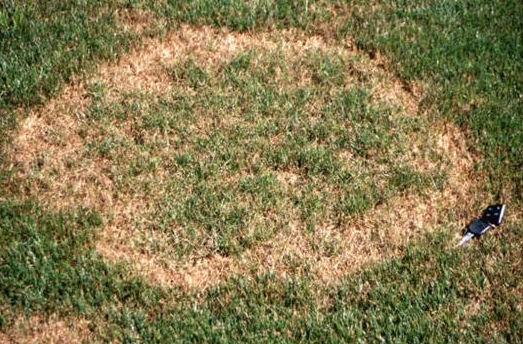Have you ever noticed beige patches of dead-looking grass interrupting your lush green lawn? The name of this turfgrass disease is a no-brainer: Brown Patch.
 Brown Patch is technically classified as a summer lawn disease. However, our Houston Lawn Specialists have noticed an increase in reported cases in the fall due to excessive lawn watering in an effort to battle the overly rough weather conditions Houston experienced during the past few months.
Brown Patch is technically classified as a summer lawn disease. However, our Houston Lawn Specialists have noticed an increase in reported cases in the fall due to excessive lawn watering in an effort to battle the overly rough weather conditions Houston experienced during the past few months.
Brown Patch derives from a disease called Rhizoctonia, which is a fungus that thrives in warm, humid climates (sound familiar, Houston?). It lives in plant debris, or thatch, and enters plants through wounds caused during mowing. In most cases, grass can go several months before showing any sign of disease, but trust us, it is growing beneath the surface – and fast.
Brown Patch damage first appears in your lawn as circular areas of brown, dead grass surrounded by a narrow, dark ring. This dark smoke ring is not always visible, but is more likely to appear in the early morning when there’s dew on the grass. The fungus grows out from a central point, with circles ranging from a few inches in diameter to several feet. It is not always in true circles.
Diseased turf first appears water soaked with leaf edges showing a wavy or wilted pattern, but soon dies completely and mats down, creating a sunken effect. For Brown Patch lawn care treatment, we recommend you limit watering, particularly in the evening. Water droplets that stay on the grass all night will spread the Brown Patch spores. If you water in the early morning hours, the grass can dry out during the day and before nightfall. Thorough watering of lawns once a week is usually sufficient.